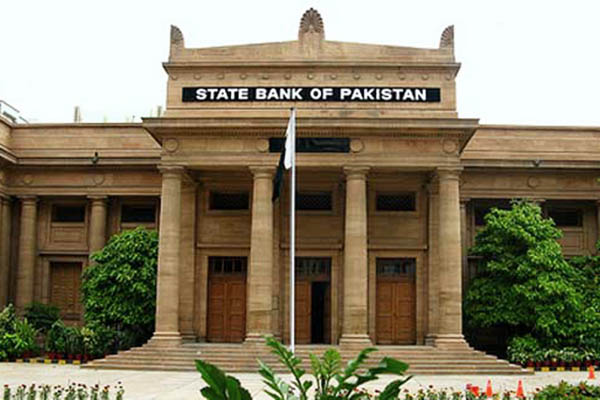
No Credit
Monetary Policy Committee claims strengthening of economic recovery, especially in large scale manufacturing and current account surplus
The State Bank of Pakistan on Monday announced it was maintaining the benchmark interest rate of 7 percent, noting that despite a positive trajectory of several domestic economic fronts, significant risks remained.
“The recent rise in COVID cases in Pakistan and many other countries presents considerable downside risks. On the upside, while it could take some time to fully implement worldwide, there has been recent encouraging news on vaccine development,” read a statement issued after a meeting of the central bank’s Monetary Policy Committee. It noted that increases in food prices continued to impact inflation, but claimed these “supply side pressures are likely to be temporary.”
It said that in light of the unchanged outlook for growth and inflation, the Monetary Policy Committee decided it was appropriate to maintain the current policy rate for financial stability, adding “lagged effects of the significant fiscal, monetary and credit stimulus injected during the pandemic should continue to shore up growth in coming quarters.”
On the real sector of the economy, the central bank noted a further strengthening, crediting construction and manufacturing for the recovery. “Sales of Fast Moving Consumer Goods rebounded in FY21 Q1, average sales volumes of POL and automobiles have surpassed their pre-COVID levels of FY20, and cement sales are at an all-time high,” it said, adding that large scale manufacturing had also expanded by 4.8 percent in FY21 Q1, against a contraction of 5.5 percent in the same quarter last year. It said textiles, food and beverages, petroleum products, paper and board, pharmaceuticals, chemicals, cement, fertilizer, and rubber products had all shown gains. However, it noted, the recovery was being supported by stimulus provided by the government, as well as the SBP’s policy rate cuts and other measures taken to mitigate the impact of the COVID pandemic.
The statement issued by the central bank also claimed that the economic impact of an “expected decline” in cotton production is likely to be offset by growth in other major crops and higher wheat production. “While social distancing continues to weigh more heavily on certain parts of the services sector, wholesale and retail trade and transportation are expected to benefit from the knock-on impacts of the ongoing pick-up in construction, manufacturing and agriculture,” it added.
The SBP approving noted the current account surplus, saying the “cumulative current account through October reached a surplus of $1.2 billion against a deficit of $1.4 billion in the same period last year.” It said this was supported by an improvement in the trade balance and record remittances. “Exports have recovered to their pre-COVID monthly level of around $2 billion in September and October, with the strongest recovery in textiles, rice, cement, chemicals, and pharmaceuticals,” it said.
Similarly, it said remittances recorded strong growth of 26.5 percent during July-October, year-on-year, and credited subdued domestic demand and low global oil prices for keeping imports in check.
The Monetary Policy Committee said the current account surplus and improving outlook and sentiment for the economy had resulted in a 3.5 percent appreciation in the Pakistani rupee, leading to the SBP’s foreign exchange reserves increasing to $12.9 billion, their highest level since February 2018.
“Based on the performance to date, the outlook for the external sector has improved further and the current account deficit for FY21 is now projected to be below 2 percent of GDP,” it said.
“In line with this year’s budget, the government continues to make concerted efforts to maintain fiscal discipline, including adhering to its commitment of no fresh borrowing from SBP,” read the statement, which noted the primary balance had posted a surplus of 0.6 percent of GDP in FY21 Q1. It said Public Sector Development Program releases had recorded an increase of 12.8 percent during the first four months of this year, and hailed FBR tax collections continuing to record positive growth at 4.5 percent in July-October.
Monetary outlook
“The MPC viewed that overall financial conditions remain appropriately accommodative, with the real policy rate remaining in slightly negative territory on a forward-looking basis,” read the statement. It said that private sector credit growth’s month-on-month momentum was reverting to pre-COVID trends, and claimed the expansion in credit to the private sector has been supported by SBP’s temporary and targeted refinance schemes.
On inflation, the SBP said that it had remained close to 9 percent during the last two months, primarily due to sharp increases in selected food items due to supply-side issues. However, it said, core inflation has been relatively moderate and stable, and believed food prices should also soon reduce. “The latest results of SBP surveys also lend support to this assessment, with inflation expectations of both businesses and consumers remaining well-anchored,” it added.
